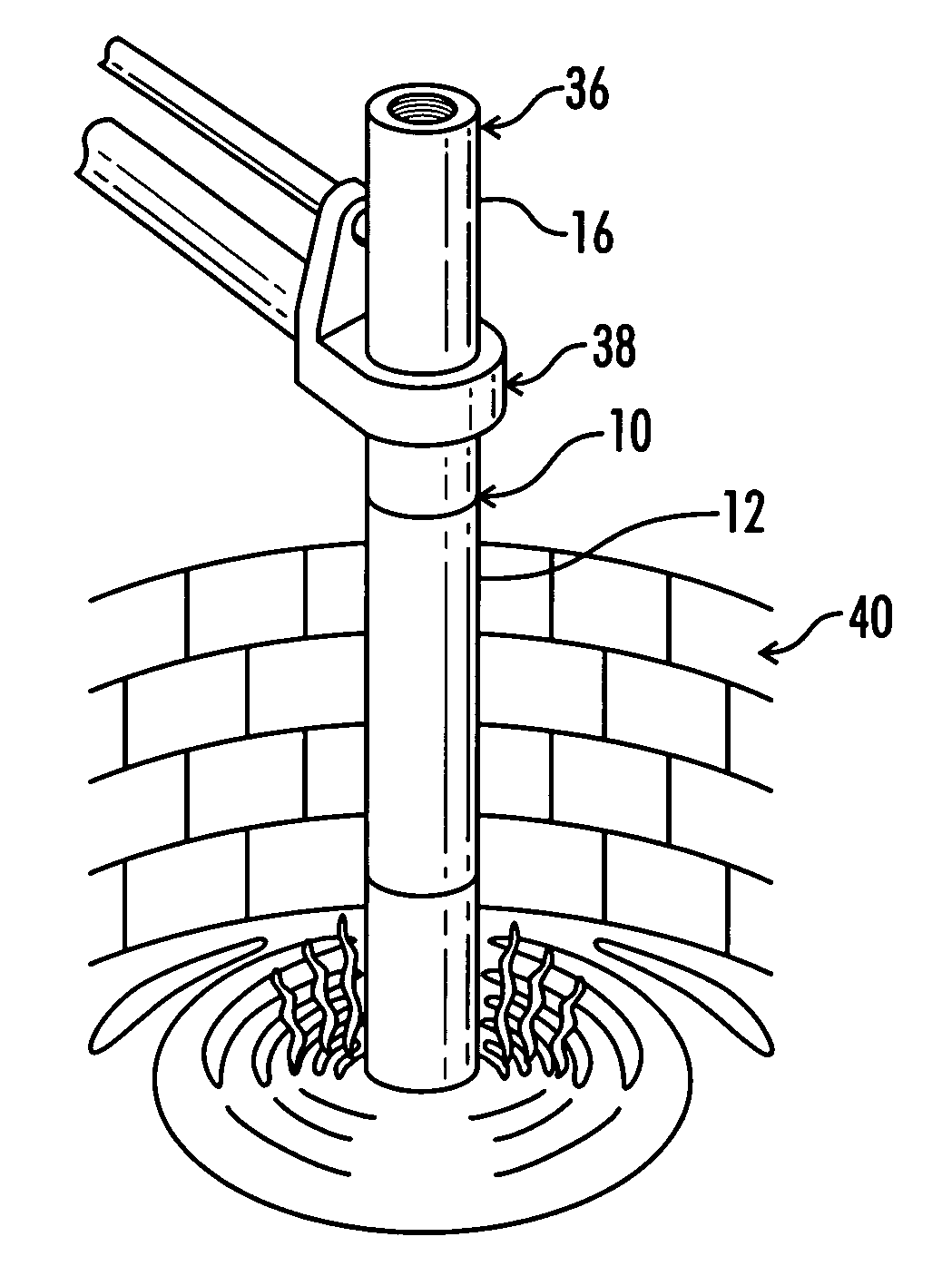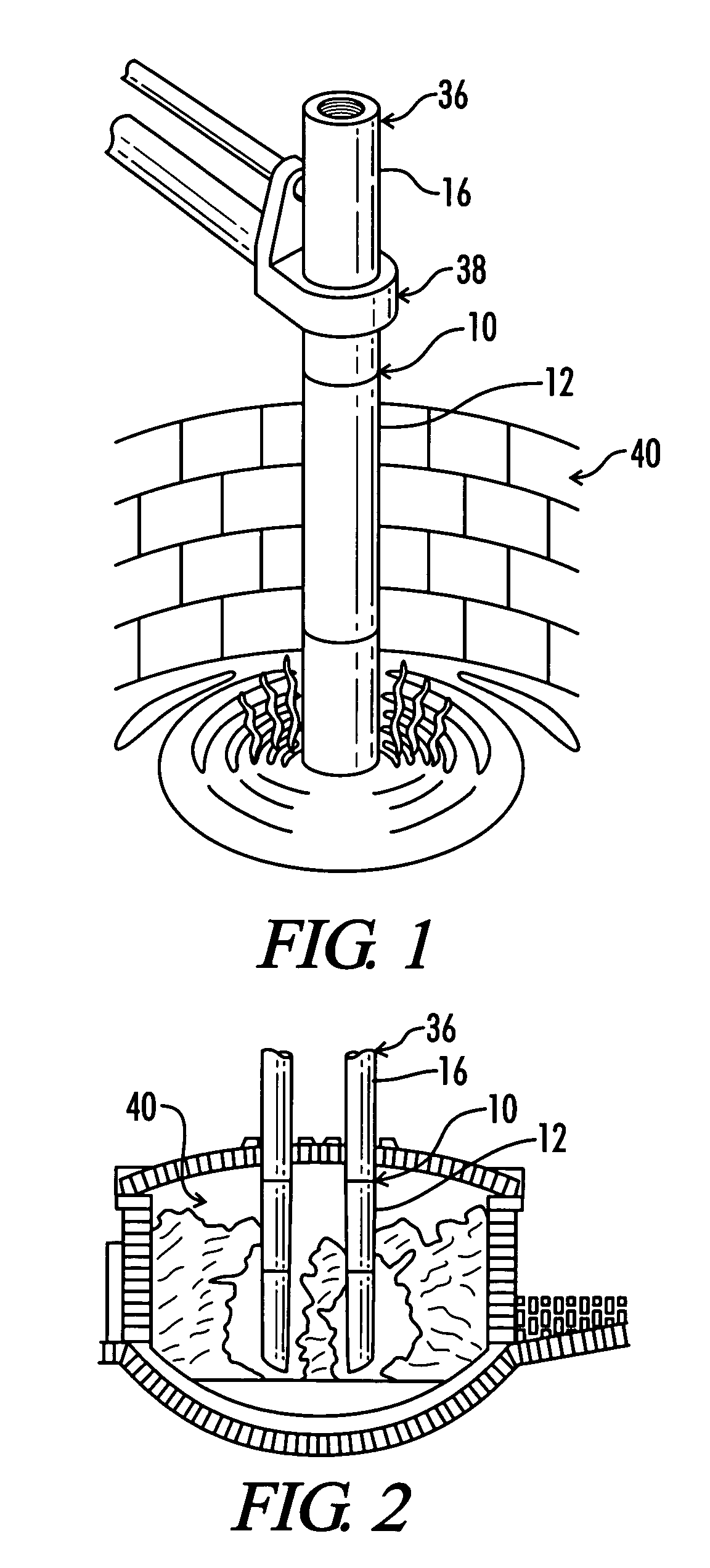Cemented electrode joint and process for curing the same
a technology of cement electrode and joint, which is applied in the field of graphite electrode, can solve the problems of all the remainder of the electrode, falling into the molten steel mixture, and electrode cracking, and achieve the effect of resisting breaking and cracking and stable electrode column
- Summary
- Abstract
- Description
- Claims
- Application Information
AI Technical Summary
Benefits of technology
Problems solved by technology
Method used
Image
Examples
Embodiment Construction
[0027] An electrode joint constructed in accordance with the present invention is generally shown by the reference numeral 10 and illustrated in FIG. 1. The electrode joint 10 is formed when a carbon body 12, such as a graphite electrode, having at least one female end 14 (best shown in FIG. 3) is connected to another carbon body 16, such as a graphite electrode, having at least one female end 18. See FIGS. 1, 3, 4. As best shown in FIGS. 3, 4, a pin 20 having at least two male ends 22, 24 is used to mate with the female ends 14, 18 of the first and second electrodes 12, 16, thereby forming joint 10 therebetween.
[0028] To desirably connect the electrodes 12, 16 at the joint 10, the present invention teaches the use of a thermally-curing adhesive material or mixture 26, which is inserted at least partially into and / or around the area of the joint 10. See FIGS. 3-6. Any suitable thermally-curing adhesive may be used. In the most preferred embodiment, the material comprises cement. In...
PUM
| Property | Measurement | Unit |
|---|---|---|
| heat loss | aaaaa | aaaaa |
| electrical current | aaaaa | aaaaa |
| AC electrical current | aaaaa | aaaaa |
Abstract
Description
Claims
Application Information
 Login to View More
Login to View More - R&D
- Intellectual Property
- Life Sciences
- Materials
- Tech Scout
- Unparalleled Data Quality
- Higher Quality Content
- 60% Fewer Hallucinations
Browse by: Latest US Patents, China's latest patents, Technical Efficacy Thesaurus, Application Domain, Technology Topic, Popular Technical Reports.
© 2025 PatSnap. All rights reserved.Legal|Privacy policy|Modern Slavery Act Transparency Statement|Sitemap|About US| Contact US: help@patsnap.com



